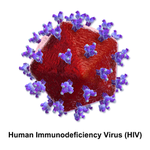
TOWNSEND Jeffrey
- 135 College St, Yale University, New Haven, United States of America
- Evolutionary Applications, Evolutionary Epidemiology, Evolutionary Theory, Experimental Evolution, Expression Studies, Genome Evolution, Genotype-Phenotype, Human Evolution, Life History, Molecular Evolution, Morphological Evolution, Phenotypic Plasticity, Phylogenetics / Phylogenomics, Phylogeography & Biogeography, Population Genetics / Genomics, Quantitative Genetics, Speciation, Systematics / Taxonomy
- recommender
Recommendations: 0
Review: 1
Review: 1

Convergent evolution as an indicator for selection during acute HIV-1 infection
Is convergence an evidence for positive selection?
Recommended by Guillaume Achaz based on reviews by Jeffrey Townsend and 1 anonymous reviewerThe preprint by Bertels et al. [1] reports an interesting application of the well-accepted idea that positively selected traits (here variants) can appear several times independently; think about the textbook examples of flight capacity. Hence, the authors assume that reciprocally convergence implies positive selection. The methodology becomes then, in principle, straightforward as one can simply count variants in independent datasets to detect convergent mutations.
In this preprint, the authors have applied this counting strategy on 95 available sequence alignments of the env gene of HIV-1 [2,3] that corresponds to samples taken in different patients during the early phase of infection, at the very beginning of the onset of the immune system. They have compared the number and nature of the convergent mutations to a "neutral" model that assumes (a) a uniform distribution of mutations and (b) a substitution matrix estimated from the data. They show that there is an excess of convergent mutations when compared to the “neutral” expectations, especially for mutations that have arisen in 4+ patients. They also show that the gp41 gene is enriched in these convergent mutations. The authors then discuss in length the potential artifacts that could have given rise to the observed pattern.
I think that this preprint is remarkable in the proposed methodology. Samples are taken in different individuals, whose viral populations were founded by a single particle. Thus, there is no need for phylogenetic reconstruction of ancestral states that is the typical first step of trait convergent analyses. It simply becomes counting variants. This simple counting procedure needs nonetheless to be compared to a “neutral” expectation (a reference model), which includes the mutational process. In this article, the poor predictions of a specifically designed reference model is interpreted as an evidence for positive selection.
Whether the few mutations that are convergent in 4-7 samples out of 95 were selected or not is hard to assess with certainty. The authors have provided good evidence that they are, but only experimental validations will strengthen the claim. Nonetheless, beyond a definitive clue to the implication of selection on these particular mutations, I found the methodological strategy and the discussions on the potential biases highly stimulating. This article is an excellent starting point for further methodological developments that could be then followed by large-scale analyses of convergence in many different organisms and case studies.
References
[1] Bertels, F., Metzner, K. J., & Regoes R. R. (2018). Convergent evolution as an indicator for selection during acute HIV-1 infection. BioRxiv, 168260, ver. 4 peer-reviewed and recommended by PCI Evol Biol. doi: 10.1101/168260
[2] Keele, B. F., Giorgi, E. E., Salazar-Gonzalez, J. F., Decker, J. M., Pham, K.T., Salazar, M. G., Sun, C., Grayson, T., Wang, S., Li, H. et al. (2008). Identification and characterization of transmitted and early founder virus envelopes in primary HIV-1 infection. Proc Natl Acad Sci USA 105: 7552–7557. doi: 10.1073/pnas.0802203105
[3] Li, H., Bar, K. J., Wang, S., Decker, J. M., Chen, Y., Sun, C., Salazar-Gonzalez, J.F., Salazar, M.G., Learn, G.H., Morgan, C. J. et al. (2010). High multiplicity infection by HIV-1 in men who have sex with men. PLoS Pathogens 6:e1000890. doi: 10.1371/journal.ppat.1000890